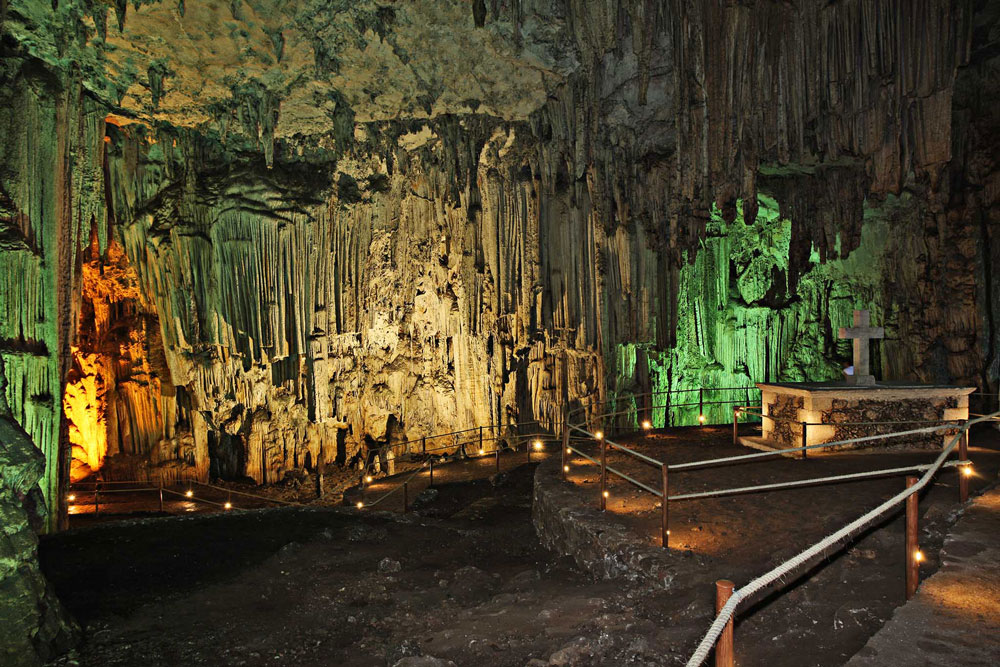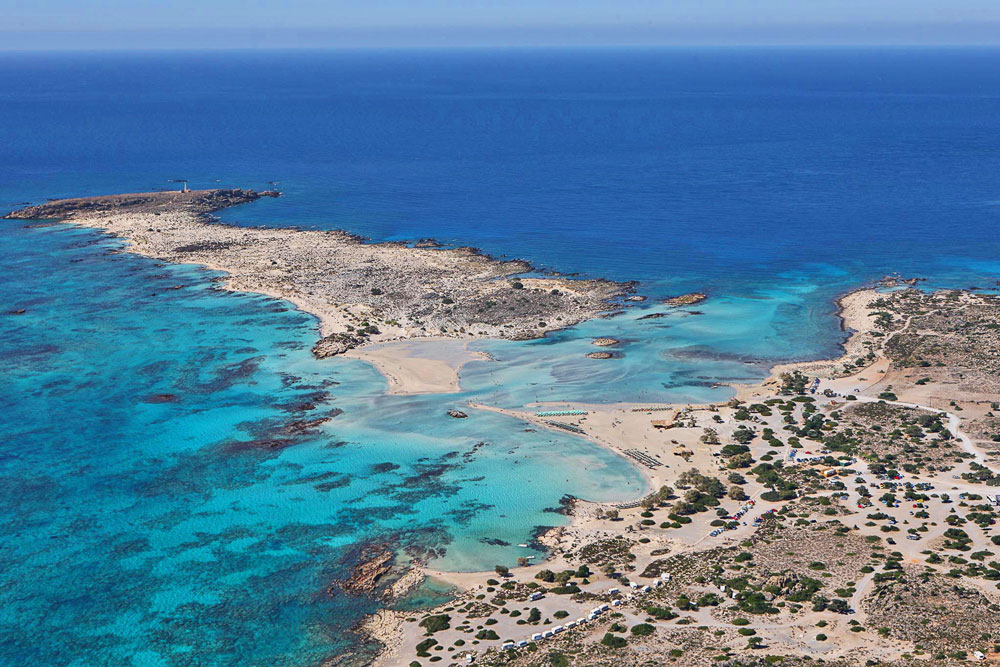Crete
Crete is an island that has all the charms. Beaches from one end to the other that invite you to explore them, beautiful people and great cuisine that would be the envy of many famous chefs. One of the places to visit is Rethymno.
Melidone Cave
The Melidoni cave is located close to the Melidoni village and has a great archeological and historical significance. According to archeologists the cave was inhabited continuously from the Neolithic to the Late Roman period. In October 1823, 370 Melidoni citizen found refuge in the cave to escape the Ottomans. After some unsuccessful attempts of recapturing the cave, the Ottomans blocked the cave and light a fire. The bones of the victims are still kept in the central chamber of the cave.
Elafonisi
Elafonisi is one of the most popular attractions in Crete for a good reason. Located 76km west of Chania it is a place of magnificent beauty and majestic scenery of turquoise waters, sand dunes covered with sand lilies. The name means “Deer Island” but in fact the Elafonisi is a sandy cape that the water cuts in half, creating a sand dune island and a lagoon. The water depth is never more than 1m and it is very easy to walk to the “island”. Elafonisi is a Natura 2000 protected area.
Fragkokastelo
Fragkokastelo is located 60km from Rethymno in the area of Sfakia and takes its name from the great Venetian castle that over watches the area. There is a number of beaches in the area covered in white sand and some basic tourist facilities but the most beautiful and popular is the one in front of the castle. It is a long beach with sand dunes and crystal clear, warm waters.
Samaria Gorge
The gorge of Samaria is the most famous gorge of Crete and one of the greatest in Europe. It has been declared a National Park since 1962 and more than 300.000 people visit it every year to admire it’s unique beauty and variety of sceneries. It is home to the endangered species Kri-Kri, a wild goat that can only be found in Crete and almost 450 species of the Cretan flora, 70 of which can only be found in this gorge. The length of the gorge is 16km but hiking from one side of the National Park to the other is 18km and it will take you 6 to 8 hours to cross.
Knossos Palace
The Minoan Palace of Knossos is located 5km southeast of Heraklion in an area inhabited continuously since the Neolithic Age, 9000 years ago. During the Bronze Age, Knossos became the capital of the Minoan Civilization and the base of King Minos himself. According to mythology, Minos kept the famous architect Dedalos prisoner until he would finish the highly elaborate and complex cluster of multi-storied buildings that compose the palace. Dedalos built a set of wings him and his son to escape but Ikarus flied too close to the sun and fell to his death. The mythical creature Minotaur was also supposed to live in Knossos, inside a complex maze designed by dedalos, the famous Labyrinth. Knossos Palace is the absolute symbol of the Minoans and a visit to the site will give you the chance to see a rich strata of ruins, wall paintings and frescos that offer a vivid image of the grandeur and cultural richness of the Minoan Civilization.
Arkadi
Arkadi Monastery is located 23km east of Rethymnon It is built at an altitude of 500m, on a plateau with olive groves, vineyards, pine trees, cypresses and primroses. Around the monastery there are many picturesque chapels.
Arkadi is the most historic monastery of Crete, which was destined to become the holiest symbol of the Cretan Struggles for Freedom, as it was here that the tragic holocaust of 1866 took place with the blowing up of the wine store where the revolutionaries kept the gunpowder. This event paved the way for the liberation of the island in 1898, while UNESCO has designated Arkadi as a European Freedom Monument.






